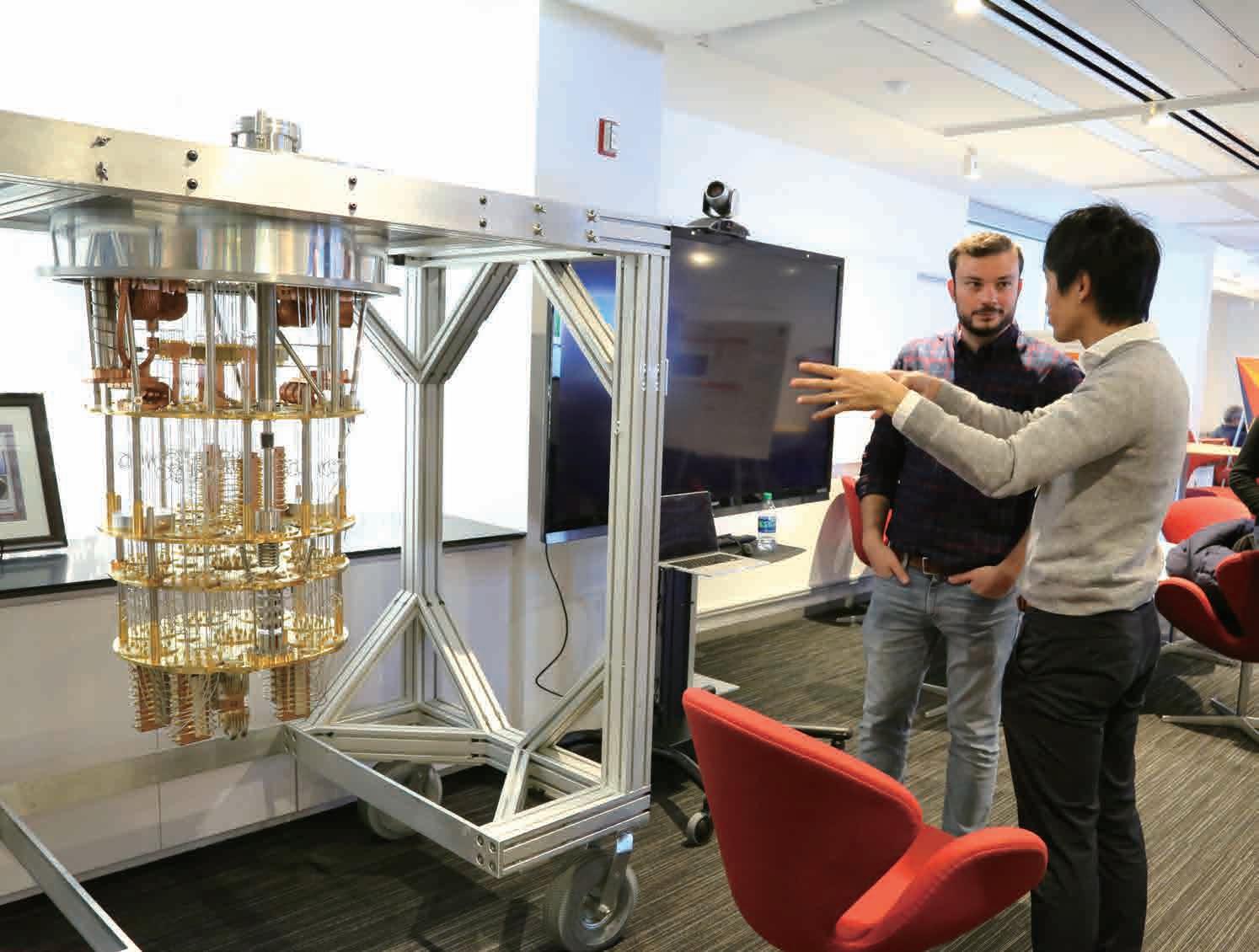
18 minute read
Technologies Supporting Canon
Over the course of Canon’s more than 80 year history, prioritizing technology has been a part of Canon’s corporate DNA and represents the source of Canon’s innovative technologies. The unique core technologies that the company has cultivated over the years have led to the creation of nine fields of R&D, which include optical technologies and image communication technologies. The company is engaged in business activities for products and services in four major areas of use: Professional, Home, Office and Industry. With the aim of developing new, one-of-a-kind technologies and products, Canon combines the creativity of its engineers with the company’s core technologies to create never-before-seen value.
Large format inkjet printers
Cloud-based document services Business inkjet printers
Office multifunction devices
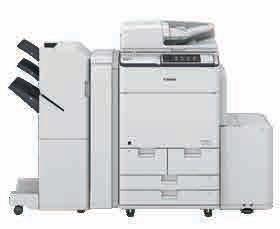
Document scanners
Optical design Optical measurement
Optical elements
Optical theory Optical analysis
Toner cartridges

Laser multifunction printers
Office
Optical Technologies
Machine and
Control Technologies
Mechanical design Mechanical control Precision equipment operation and control Mechatronic devices
Image Communication
Technologies
High-quality image processing Image processing and editing Image coding Image information processing
Solution software
Business inkjet multifunction printers Laser printers
3D machine vision systems

Die bonders
Digital continuous feed press Multimedia projectors


Facsimile machines
Calculators
Network cameras

Commercial photo printers
Image-formation processes
Optimal design of modules and systems
[R&D fields]
[Core technologies] Organic LED (OLED) panel manufacturing equipment Semiconductor lithography equipment Industrial cameras
Color label/ Color card printers
Industry
Components CMOS Sensors
Multi-purpose cameras Flat panel display (FPD) lithography equipment
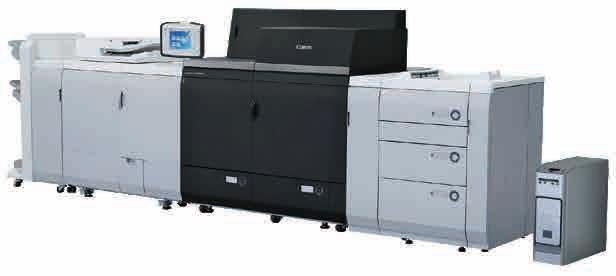
Mixed reality (MR) systems
CONTENTS
Chapter 1
Inspiring Innovation
01 05 07 09 11 Technologies Supporting Canon Free Viewpoint Video System Development of a New Camera System Of ce Multifunction Devices with Expanded Functionality Cutting-Edge CMOS Sensors 13 15 17 19 8K Visual Solutions Open Innovation Materials Research Satellite Development

Chapter 2 Accelerating the Development of New Canon Businesses
23 25 27 29 31 Network Cameras CT Scanners Medical Imaging Commercial Printing Nanoimprint Lithography
Chapter 3
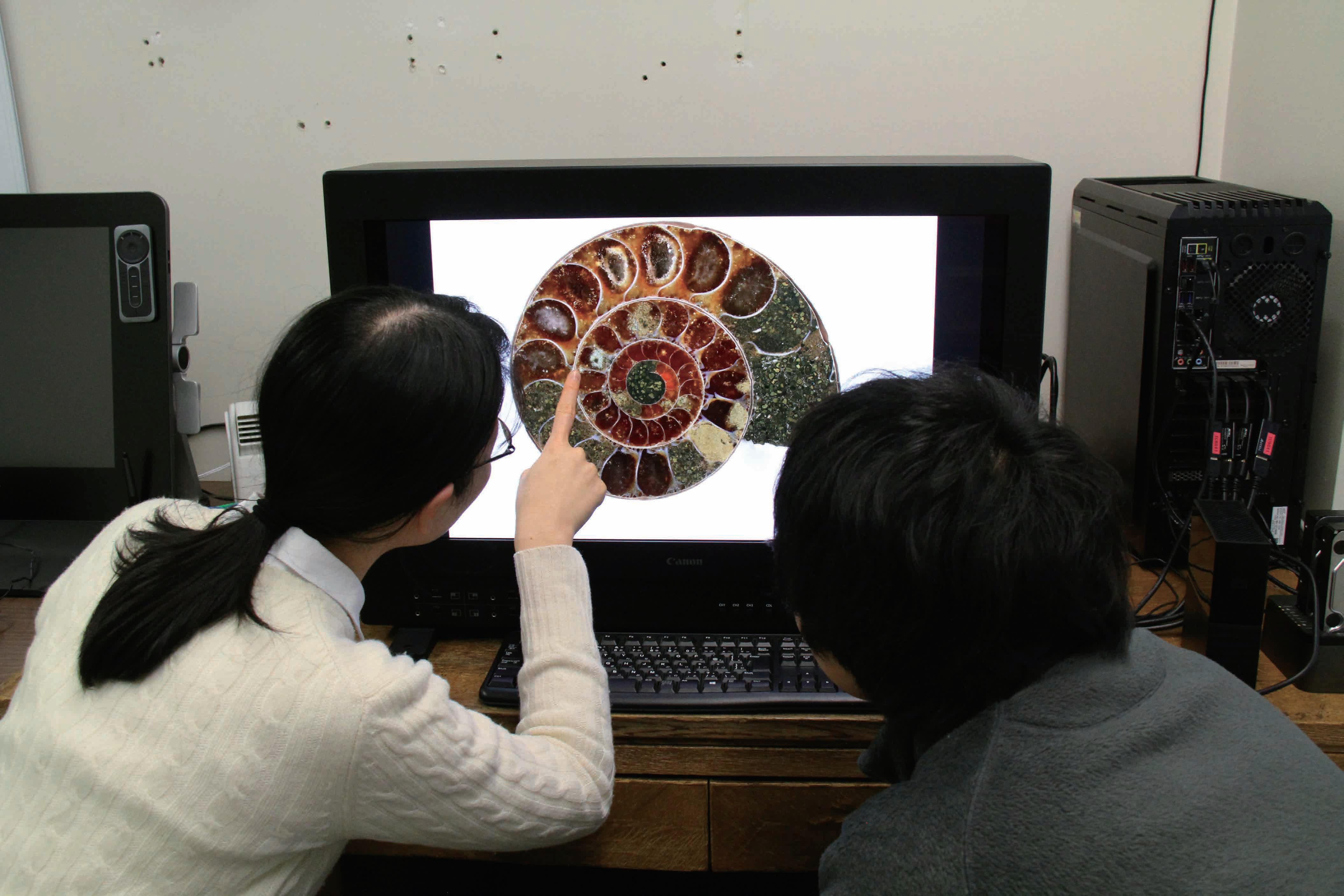
Canon Keeps Doing What Canon Does Best
35 37 39 41 Canon Design The Tsuzuri Project Intellectual Property Activities Global R&D
1Chapter


Inspiring Innovation
Imagine making the “invisible” visible. Canon merges ideas and technologies to create products, services, and solutions that have never existed before—things people could only wish were possible before. To resolve issues facing society, we will continue pursuing avenues and territories as yet unexplored.
Free Viewpoint Video System
Controlling
Perspective and Time
Using Canon’s unrivaled imaging technologies, the Free Viewpoint Video System provides a video experience like never before.
Technologies for Visual Expression Create a Brand-new Viewing Experience
The 2016 finals match for a Cup of J.LEAGUE marked the start of a new era of visual solutions. Conventional stadium systems use fixed cameras and cable-suspended cameras, which provide video feeds from limited viewpoints. Meanwhile, for the first time ever, the new Canon system allows the viewer to see the action on the field from any position or any angle in the stadium. You can view the same scene from various angles, changing to the perspective of an athlete on the field or any number of alternate viewpoints. Additionally, viewers can control both viewpoint and game time at will. For example, viewpoint can be changed while watching the scene in slow motion. This revolutionary technology dramatically changes how sports are viewed, and this match was the moment it became reality.
The means by which video is generated may very well be considered the future of video capture. Visual data is captured by high-resolution cameras installed around the stadium, then converted into 3D data and stored on servers. When the user sets or moves the position of the virtual camera, the video they see is generated from the 3D data to show video from the desired camera angle. This video data can then be output for viewing.
In addition to optical and visual technologies consistently developed since its founding, the Canon Group develops cutting-edge technologies in such fields as network transmission and user interface. Such technologies have the power to completely transform the workflows of video production and broadcasting.
Canon’s project to develop its Free Viewpoint Video System involved selecting engineers from various divisions to work together and combine their specialized engineering skills.
Conceptual image

The Free Viewpoint Video System creates an immersive experience, placing the spectator into the middle of the action

Cutting-Edge Systems that Anticipate Advances in Society and Technology
The Free Viewpoint Video System is currently being tested for such sports competitions as soccer and rugby. In order to generate accurate 3D data, every camera must start shooting at the exact same time. If the timing is off for even one camera, the data cannot be generated correctly. Developers were aware of this issue from the design phase, and accordingly developed algorithms to control and completely synchronize the start of shooting for multiple cameras.
An additional challenge is the need to process enormous amount of data instantaneously in order to generate Free Viewpoint Video data. Efforts are underway to generate high-definition images at faster speeds through such means as parallel distributed processing.
Canon will continue to build systems designed for cutting-edge technologies and emerging trends.
Capture Free Viewpoint Video data generation Video applications

Development of a New Camera System
Expanding
Photographic Freedom
The new EOS R System with a new lens mount to extend boundaries of photographic expression. With high-resolution imaging that meets modern standards, the system opens up new possibilities for visual expression.
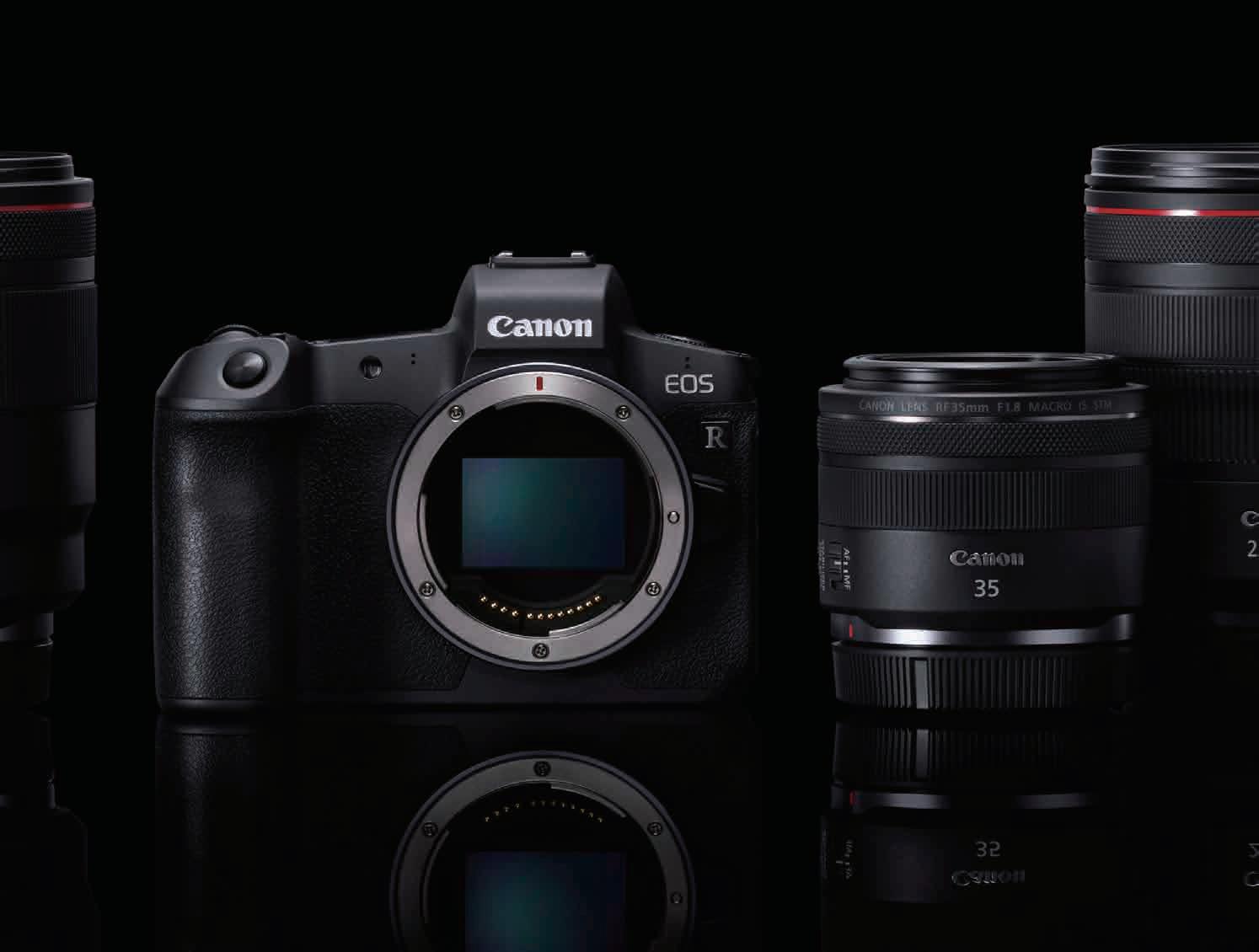
A large-diameter mount and short back focus helps expand photographic expression
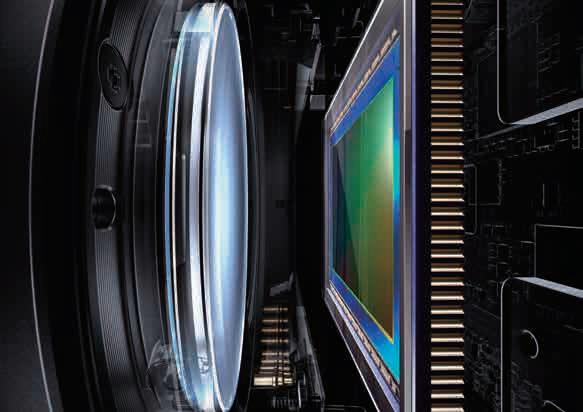

The EOS R body is both lightweight and durable.
SLR Cameras: Thirty Years of Change
In 1987, Canon introduced the first EOS series single-lens reflex (SLR) camera, with a fully electronic mount. Over the next three decades, the world of SLR cameras has been swept by successive waves of change. Perhaps the biggest paradigm shift has been the transition from film to digital photography. Now, in addition to prints, it is commonplace for people to view photos on electronic displays and to share and publish photos online.
The boundary between still photography and videography is also becoming blurred, and users’ needs, priorities and the environment in which they pursue visual expression are continuously diversifying and evolving. Amidst these changing times, Canon announced in 2018 a new camera system—the EOS R System—developed to encourage the next revolution. The “R” represents the development concept of “Reimagine optical excellence,” signifying Canon’s strong commitment to redefining the world of imaging.
The RF Mount—Realizing Optical Ideals
The project to develop the EOS R System was a cross-department effort involving optical, mechanical and electrical engineers working with specialists in cinema production and network cameras. The team began by reevaluating the strengths of the EOS System. Canon’s existing EOS SLR cameras are loved by photographers all over the world, from beginners to professionals. The team decided to reexamine why. The answer that emerged was the high-performance lens mount that enables sophisticated communication between the camera and lens.
Instead of the existing EF mount, the EOS R System employs the newly developed RF mount. In order to realize the ideal lens, Canon adopted the same large diameter as the EF mount (54 mm) but with a shorter back focus distance. This allows the rear of the lens to be positioned closer to the CMOS sensor.
The new mount offers a much greater degree of freedom in lens design, and accordingly, significant advantages including higher spec image quality, higher performance and compact, lightweight designs.
Canon’s Bold Spirit of Endeavor Leads to Innovative Technologies
The RF mount also offers improved communication between the lens and the camera body. The fully electronic mount controls autofocus and aperture with high precision, continuing the EOS System philosophy of speed, comfort and high image quality.
The RF mount incorporates a 12-pin electronic contact system—an increase over the 8-pin configuration of the EF mount—to improve communication speed and enable storage of all optical information and optical correction data in the RF lens. The data is communicated in real time to help realize high image quality.
This high-speed transmission of data is useful for such operations as assigning control of settings including aperture, shutter speed, ISO speed or exposure compensation to the control ring of RF lenses. Additionally, it has enabled Canon to include Digital Lens Optimizer function that maximizes image quality.
Such new features are made possible by the new mount system. Throughout the development of the new mount, major themes included the ability to respond to changing needs and laying the groundwork for further advancements in anticipation of new technologies.
The engineers who led the development of the EOS R System spent countless hours discussing the form it would take. Their wish—to offer new value in visual expression to customers by extending their creative possibilities.
However, the journey has only just begun. Canon engineers will continue to study the needs of users and the marketplace, and strive to create products that surpass expectations.
Ultimately, the source of their motivation is the smile on users’ faces when they pick up a camera emblazoned with the Canon logo.
Office Multifunction Devices with Expanded Functionality
Leading
The Future with Big Data
Multifunction devices using big data are becoming the linchpin of the smart office. As the world of IT evolves, Canon is revolutionizing working styles and supporting new ways to work.
To cope with a constantly changing IT environment, including the increasingly ubiquitous IoT, many companies are taking advantage of cloud computing and big data. They are actively incorporating these technologies into products and services that improve operational efficiency and provide new services. Such advances have led to the emergence of the smart office.
Canon has swiftly adapted to the changing environment by designing Office Multifunction Devices (OMDs) to take advantage of industry innovations. Over one million Canon OMDs in more than 100 countries and regions are connected to the cloud. In addition to copying and scanning, these cloud-connected devices collect and store data in secure online networks for use around the globe.
Big data gathered from OMDs all over the world is analyzed by Canon—data such as the timing for replacing consumables and the occurrence of breakdowns—in order to greatly reduce equipment downtime.
A Global R&D System to Support the Evolution of Multifunction Devices
Canon’s OMDs are also contributing to more efficient document management through such features as directly uploaded scanned documents to the cloud, and batch management of documents. However, there are also new challenges to be addressed. For example, Canon is working on technology that enables OMDs to digitize scanned files for efficient upload and storage to the cloud by reducing noise in high-quality images, compressing files without loss of image quality and ensuring files resemble the original image as closely as possible.
Strengthening security has also become a critical point. When a multifunction device connects to the outside world through an external network, there is an increase risk that it might become the target of a cyber-attack. To protect against such possibilities, Canon employs the latest industry-standard encryption methods for communications between OMDs and the outside world, as well as redundant security measures such as technology that detects tampering with the device’s firmware.
Canon’s global development system supports the evolution of OMDs. One example is the development of OCR (Optical Character Recognition) in conjunction with I.R.I.S., the Belgium-based Canon Group company. This technology makes it possible to search for and within scanned documents.
In addition, the Canon Group company NT-ware in Germany is developing uniFLOW Online software for OMDs that uses cloud-based infrastructure to offer expandable features that facilitate smooth sharing of information and improve operational efficiency. Collaboration with such overseas Group companies speeds up development and brings new perspectives to Canon.
Office Multifunction Device evolution is transforming business and workstyles.
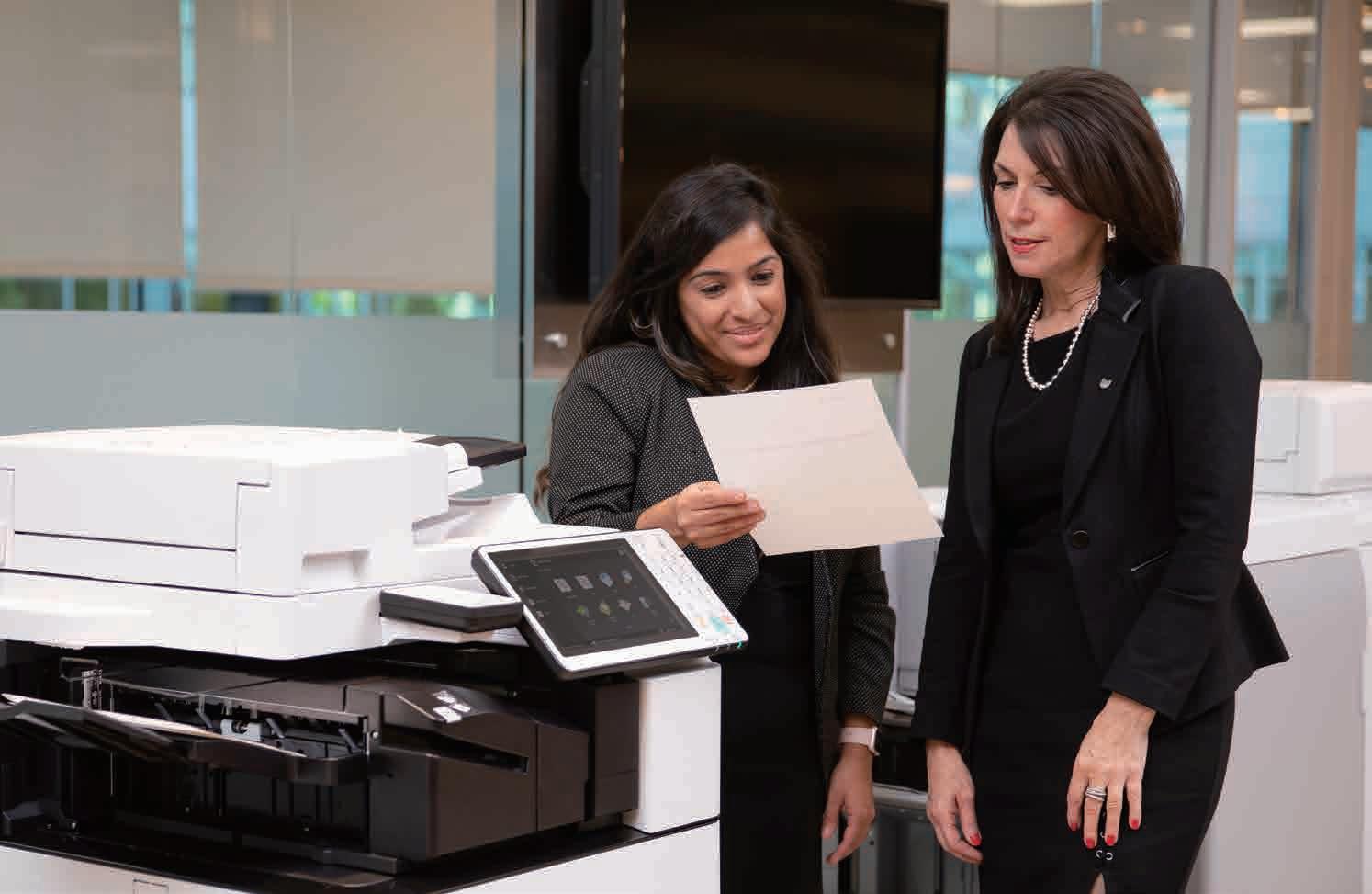
Working Style Reform and a Future Empowered by Data
Cloud use by OMDs is also effective in changing the way people work. With Japan facing a declining and aging population, there is significant demand for workplace improvements that enable employees to work while also balancing such home responsibilities as childcare or nursing care. Improvements are also needed to boost white collar productivity. Cloud use allows people to work as usual not only when in the office, but also from home or on the go—whether parenting, caregiving or on a business trip—helping to boost productivity.
Additionally, based on usage data from the devices, it is possible to schedule automatic deliveries or stock replenishments of consumables before they run out. Usage analyses also help determine the ideal times to perform maintenance operations, thereby greatly reducing downtime.
By analyzing the enormous amount of data gathered in real time from Canon’s OMDs connected globally via the Internet, we can provide products and services that support workplace and a variety of work style innovation as the IT environment evolves.
Canon’s all-in-one OMDs have set the standard with a single green start button to enable simple operations. This “green button” culture of simplification embraces new possibilities in working styles and ways of doing business.

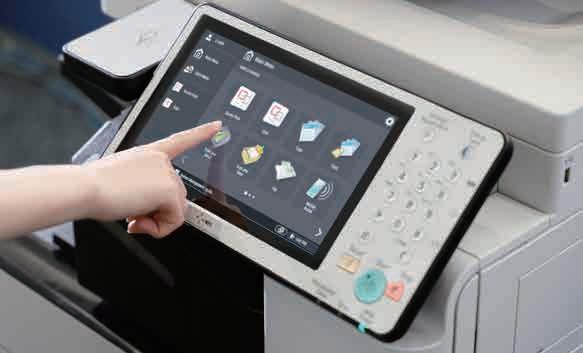
Cutting-Edge CMOS Sensors
Capturing
Fast-Moving Subjects, Distortion-Free
Canon has developed CMOS sensor technology from the ground up for its digital SLR cameras. Bringing greater convenience and safety to the world by making visible that which could not be seen before.



CMOS Sensor Captures Fast-Moving Subjects without Distortion
An issue facing conventional CMOS sensors, which sequentially expose pixels one row at a time, is that fast-moving subjects can become distorted in the image produced.
To that end, Canon has implemented a newly developed scanning method that exposes all of the sensor’s pixels at the same time. This makes possible the capture of distortion-free images even when shooting fast-moving subjects, which is required for such industrial applications as product inspection. Although there were initial concerns about the power consumption necessary to achieve a high frame rate of 120 frames per second with a full-frame readout, a low power consumption was achieved using proprietary Canon circuit technology. What’s more, as less heat is generated by the sensor, the camera body doesn’t need to be made larger to accommodate a heat sink, allowing for more compact camera designs. The sensor has strong potential for use in cameras that inspect parts on belt conveyors at factories and for aerial cameras mounted on drones.
3U5MGXSC
Photo taken with rolling shutter


Photo taken with global shutter
A CMOS Sensor Capable of Clear Color-Image Capture by the Light of a Crescent Moon
From surveillance to observing natural phenomena, there is a growing need to capture video in the dark. By increasing size of the sensor’s pixels, allowing them to capture more light, Canon has developed an ultra-high-sensitivity sensor capable of Full HD video capture in color with reduced noise, even in low-light environments where subjects would be difficult to discern with the naked eye.
This CMOS sensor features pixels measuring 19 μm (μm=micron, one millionth of a meter) square, which is more than 7.5-times the surface area of the pixels on the CMOS sensors incorporated into Canon’s top-of-the-line EOS-1D X Mark II and other DSLR cameras.
The sensor makes possible video capture with as little as 0.001 lux of illumination, roughly the equivalent of starlight, and was even used to successfully capture footage of a rare phenomenon known as a moonbow, a rainbow produced by moonlight.
The sensor is expected to be used for such applications as astronomical observation, monitoring natural disasters, crime prevention and the observation of microorganisms in low light, as well as for wildlife photography and video production.
ME20F-SH
Scan to access a special video and learn more about Canon’s cutting-edge CMOS sensors.
Comparison of images captured under identical conditions
Captured using a typical professional-use video camcorder

Captured using the Canon ME20F-SH ultra-high-sensitivity multi-purpose camera

Awe-inspiring
Fidelity, As If You Are Really There
The ultra-high resolution and high image quality of Canon’s 8K technology makes viewers feel as though they have been transported to a distant location to watch the action live. Beyond sports and events, 8K imaging can also allow for closer observation in scientific fields.
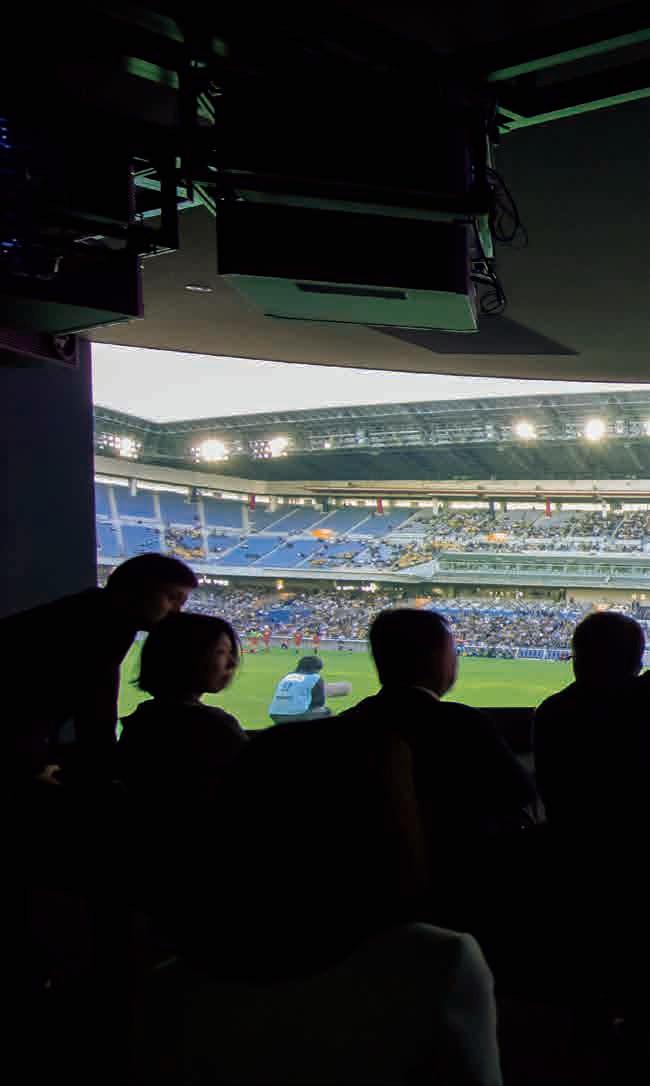
8K Video Transports the Viewer to the Scene
Higher resolution with less distortion. Canon’s video technology developers have striven to deliver realistic video that feels as though you are seeing everything unfold before you with your own eyes.
At the 2015 Canon Expo—an exhibition held every five years to showcase the Company’s latest technology and upcoming developments—Canon screened an 8K video, which contained roughly 16 times the amount of information in a Full HD video. The many people seeing 8K video for the first time were in awe of the rich expressive power afforded by its high resolution. Canon’s 8K visual solutions continue to evolve and now, more than simply something to be looked at on a high-resolution screen, deliver an experience so immersive that one has a sense of actually being there, allowing viewers to savor the excitement of seeing an event unfold before their eyes.
8K Lenses, Cameras and Displays Developed without Compromise
Canon is one of the few manufacturers in the world that can develop lenses, cameras, and displays covering 8K video production from input to output. The tenet of putting technology first encoded in Canon’s corporate DNA has accelerated the development of high-image-quality 8K technology to win over video production professionals.
Harnessing our expert command of optical technology, we re-examined every facet of optical design to create a lens that thoroughly minimizes aberrations and achieves high-resolution, high-contrast imaging across the entire focal length range, to deliver sharp 8K video from the center of the image to the periphery.
Because an 8K camera generates a much higher volume of data, a conventional image processor was insufficient to process it all. To that end, Canon worked to develop a system that could process massive amounts of data at high speed by making use of a state-of-the-art programmable IC (integrated circuits that can be programmed to carry out various functions). This system made it possible to shoot ultra-high-resolution video with low noise and a wide dynamic range.
Through their capacity to process visual expression with ultra-high resolutions surpassing that of the human eye and proprietary backlight control, 8K displays produce brighter highlights while maintaining deeper blacks to output images with three-dimensionality and textures close to the real thing.
8K immersive live viewing at Canon’s HQ
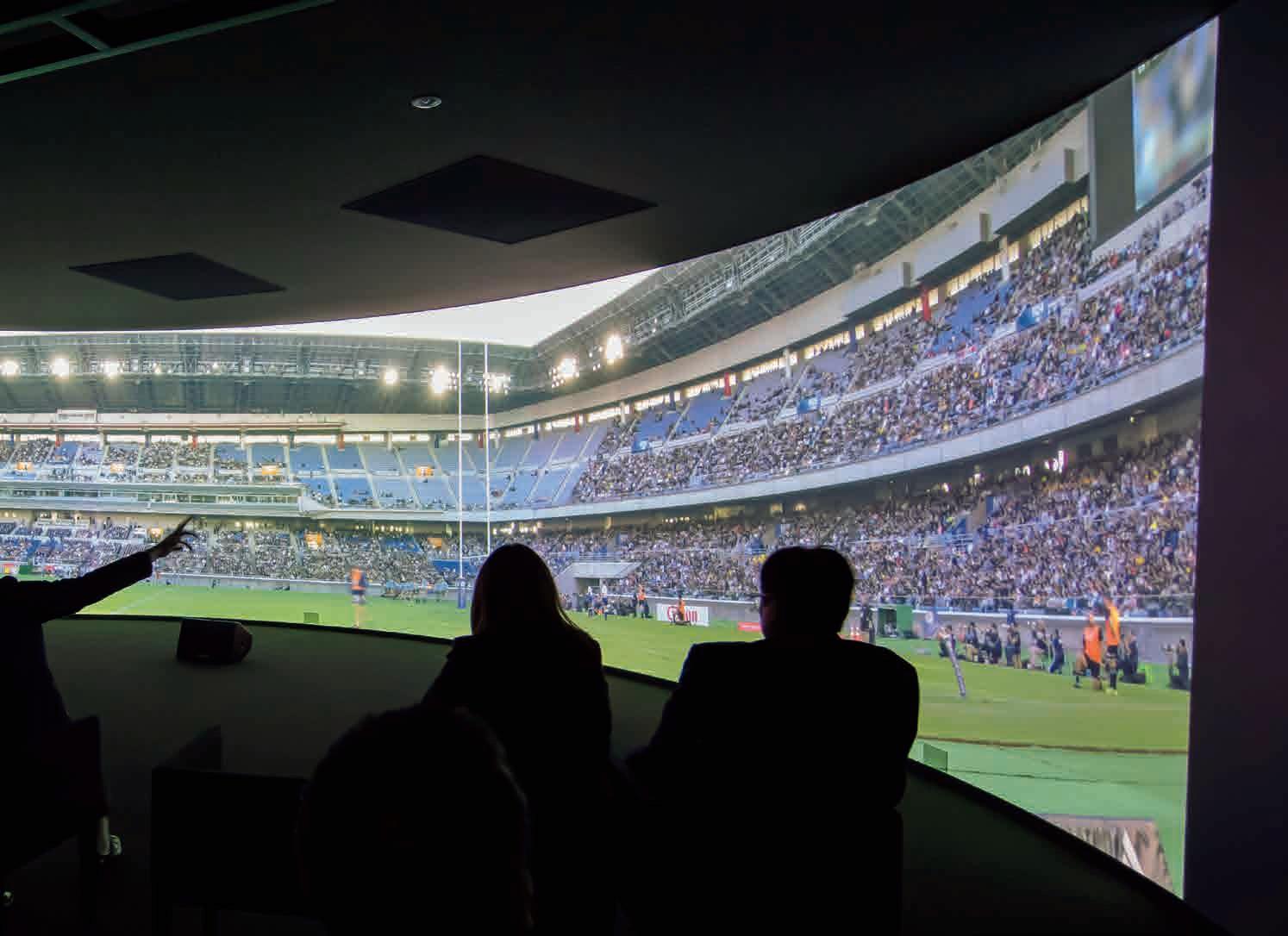
8K Visual Solutions Fundamentally Change How Video is Produced and Enjoyed
In sports broadcasting, it has long been difficult to capture video that shows both the facial expressions of the athletes and an overview of the entire field.
Canon conducted two live-video transmission tests in October 2018 for an international rugby match held in the city of Yokohama.
In the first test, video shot with Canon 8K cameras and lenses was transmitted to the company’s Tokyo headquarters using such conventional equipment as fiber optic cables and a 4K broadcast van. The live footage was projected in 8K using four 4K/HDR projectors and screened in 8K on Canon’s 8K/HDR display, resulting in impressive 8K footage with faithful reproduction down to the finest details.
In the second test, ultra-wide-angle video was captured using an 8K camera equipped with a fisheye lens, converted in real time to correct for distortion, and transmitted from the stadium. The video was received at the Canon headquarters and projected onto a large curved screen using multiple 4K projectors. The impressive live video fully encompassed the audience’s field of vision, creating the feeling of being at the stadium watching. These tests accelerated the development of technologies for the practical implementation of ultra-realistic live viewing solutions.
Beyond just sports viewing, 8K visual solutions have already begun to show their true value for applications in other fields. The 8K display developed by Canon has been used in the field of geobiology to view and analyze cross-sectional images of fossils contained in rock formed in the ocean in prehistoric times. This system makes it possible to see subtle color differences and microscopic marks that had not been observed before, even presenting the chance to discover unknown forms of life.
Going forward, Canon will continue to improve upon current 8K video technology and develop wide-reaching 8K visual solutions, including never-before-seen visual experiences that transport viewers to distant places and scientific applications.
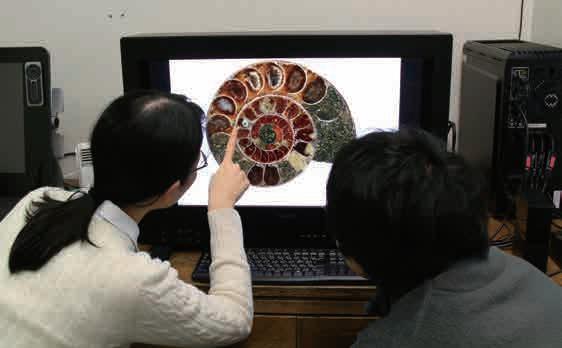
Open Innovation
Transcending
Conventional Ideas
Canon is engaging in open-innovation-based research and development with research organizations internationally, covering such broad themes as quantum computing. When combined with Canon technologies, the results of this R&D generate new value for society.
A technical discussion about a quantum computer at an IBM Research laboratory
